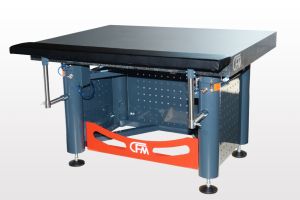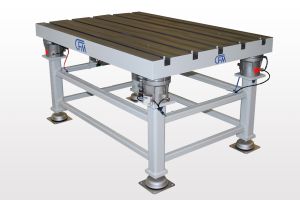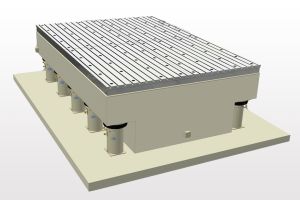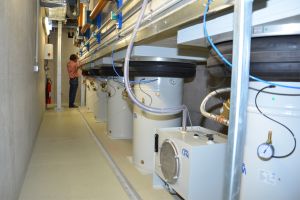Active & Passive Vibration Isolation
In vibration isolation technology, a distinction is made between active and passive vibration isolation.
Every vibration isolation aims to minimize the transmission of oscillations that are created by machines and plants. This procedure protects the surroundings and sensitive devices from vibrations and shocks. Vibration isolation technology consists of both active and passive vibration isolation.
Active Vibration Isolation
Isolation of the source
Active vibration isolation describes the process of decreasing the sinusoidal or pulsed oscillations that are created by machines or test rigs. These vibrations can damage adjacent buildings or machines and can distract or possibly harm employees close-by.
The careful layout of the seismic masses and applicable spring-damper-elements is of key importance in order to keep the movements of the system within permitted limits.

Passive Vibration Isolation
Isolation of the receiver
Passive vibration isolation is applied when shock-sensitive machinery must be protected against externally impacting vibrations, such as vibrations from the building or the ground. Typical machines suitable for passive vibration isolation are precision machine tools, scanning electron microscopes, laser measuring instruments, or measuring robots.

Basics
The frequency ratio between excitation frequency and natural frequency defines the response of an oscillatory system to external excitation. The damping properties of the isolator are also important as shown in the amplification function. A frequency ratio >√2 is needed to isolate vibrations; a value between 3 and 4 is generally chosen in practice. Greater ratios can be achieved for certain special requirements, however, they are reaching their limits both technically and economically. Values smaller than √2 can cause critical resonances regarding the excitation forces.
In general, there are 4 different types of isolators that operate in different, but partly overlapping frequency intervals:
- Air springs: approx. 0.6 - 3 Hz
- Steel springs: approx. 1.8 - 6 Hz
- Elastomers: approx. 8 - 12 Hz
- Rubber mats: approx. 15 - 35 Hz





